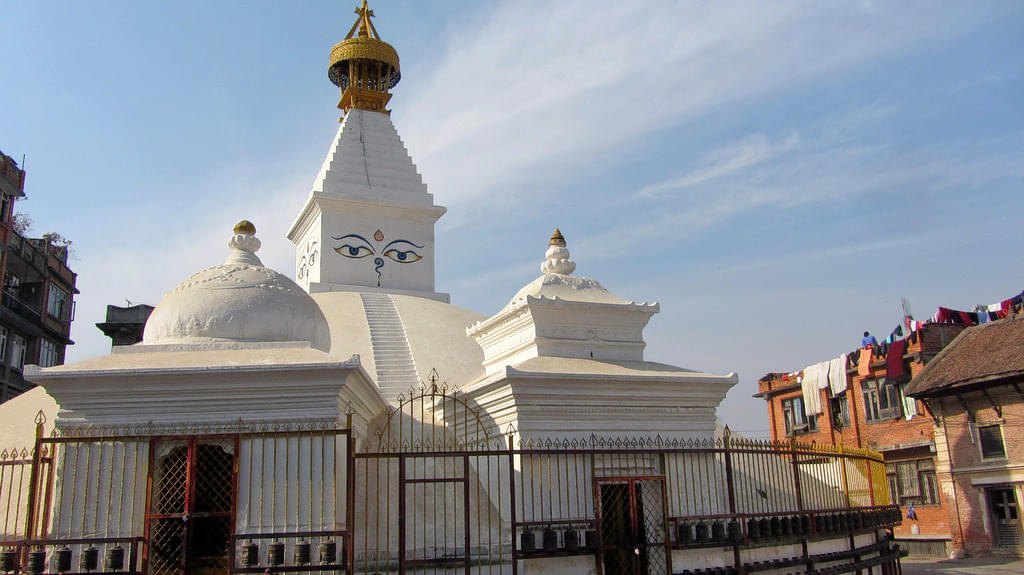About The Ashokan Stupas
Nepal is the center for Buddhist culture in the country. A fine example of Buddhism in the country is its temples and their stupas. This includes the four Ashoka Stupas. Named after the Emperor Ashoka of India, these stupas not just show Buddhist architecture, but they even reflect different wheels of Buddhism- the wheel of righteousness or dharma. These stupas were traditionally built as markings on the four corners of Patan.Highlights: These stupas are mounds crowned monuments that were erected in 250 century B.C. Three of the mounds that are constructed have been covered in grass. The fourth one has a white mound and a colorful monument. It is believed that such a construction stems out from the fact that Buddhist stupas are supposed to be different from each other. So, certain highlights and changes are made for each of the design to preserve their uniqueness. That’s why each of the stupas should be explored.
Location: Patan, Nepal.
Tourism Board Alliances
All About Patan Trip
Popular Related Attractions
Godavari Botanical Garden
With high Himalayas on one side and steamy Indian plains on the other, Nepal is a land that’s full of surprise ...Read More
Patan Industrial Estate
For a really long time, Nepal didn’t have an industrial revolution. The industrial changes began in the early ...Read More
Patan Gate
Sometimes, you have to open the gates to discover a bygone era. If you want to transcend into the world that e ...Read More
Baha Bahi
Patan is one of the oldest cities in Nepal. It is also the home to Durbar Square, which is a beautiful monster ...Read More
Bhinchhebahal Tole
Searching for different things to do in Lalitpur? Then Bhinchhenbahal should be on your list. Patan is so beau ...Read More
Temples Of Machchhendra Nath And Min Nath
In Patan the temples have a pivotal role to play. Temples around the city are quite popular and the most popul ...Read More
Popular Related Destinations
Why Choose Thrillophilia
Best Domestic Packages
Ladakh Tour PackagesHimachal Tour PackagesKashmir Tour PackagesRajasthan Tour PackagesAndaman Tour PackagesUttarakhand Tour PackagesGoa Tour PackagesSpiti Valley Tour PackagesNorth India Tour PackagesSouth India Tour PackagesNorth East Tour PackagesIndia Tour PackagesDelhi Tour PackagesOoty Tour PackagesGangtok Tour PackagesChikmagalur Tour PackagesSikkim Tour PackagesShimla Tour PackagesManali Tour PackagesRishikesh Tour PackagesMeghalaya Tour PackagesJim Corbett Tour PackagesMussoorie Tour PackagesArunachal Tour PackagesKerala Houseboat PackagesDarjeeling Tour PackagesLeh Ladakh Bike Trip PackagesAuli Tour PackagesNainital Tour PackagesKedarnath Tour PackagesCharDham Yatra PackagesDharamshala Tour PackagesWayanad Tour PackagesKerala Tour PackagesJaipur Tour PackagesJodhpur Tour PackagesUdaipur Tour PackagesGolden Triangle Tour PackagesMount Abu Tour PackagesRanthambore Tour PackageCordelia Cruise PackagesMunnar Tour PackagesCoorg Tour PackagesShillong Tour PackagesMahabaleshwar Tour PackagesOoty Tour PackagesKarnataka Tour PackagesSrinagar Tour PackagesDehradun Tour PackagesLonavala Tour Packages
Best International Packages
Maldives PackageBali Tour PackagesDubai Tour PackagesEurope Tour PackagesSwitzerland Tour PackagesSingapore Tour PackagesThailand Tour PackagesBhutan Tour PackagesSri Lanka Tour PackagesMauritius Tour PackagesSeychelles Tour PackagesBangkok Tour PackagesPattaya Tour PackagesGreece Tour PackagesParis Tour PackagesLondon Tour PackagesPhuket Tour PackagesNorway Northern Lights TourFinland Tour PackagesAmsterdam Tour PackagesItaly Tour PackagesIceland Tour PackagesTurkey Tour PackagesNorway Tour PackagesSpain Tour PackagesGermany Tour PackagesIstanbul Tour PackagesNepal Tour PackagesMalaysia Tour PackagesVietnam Tour PackagesAustralia Tour PackagesSouth Africa Tour PackagesJapan Tour PackagesEgypt Tour PackagesPhilippines Tour PackagesHong Kong Tour PackagesIreland Tour PackagesAfrica Tour PackagesRussia Tour PackagesKenya Tour PackagesPrague Tour PackagesMasai Mara PackagesAntarctica Tour PackagesNew Zealand Tour PackagesSweden Northern Lights PackagesDenmark Tour PackagesIsrael Tour PackagesCambodia Tour PackagesJordan Tour PackagesTanzania Tour PackagesSantorini Tour PackagesAustria Tour PackagesCroatia Tour Packages
